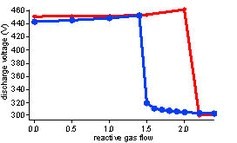 |
 |
Diederik Depla has received his Master Degree in Chemistry in 1991 at Ghent University (Belgium). In 1996 he promoted with a PhD thesis in Solid State Chemistry on spray drying of precursors for superconductors. After a short period as senior scientist in the Department of Solid State Sciences, he became in 1999 Professor at the same department. His research focuses on the fundamental aspects of reactive magnetron sputter deposition. He has shown the importance of ion implantation on this process and explained the discharge voltage behavior during reactive sputter deposition. He received in 2022 the Bill Sproul Award from AVS for his persistence to unravel the fundamental processes during reactive sputter deposition. He is now head of the research group “Dedicated research on advanced films and targets(DRAFT)” in the same department. More details can be found on www.draft.ugent.be.
Main research topic: Reactive sputter deposition
Magnetron sputter deposition is a mature physical vapor deposition technique to grow thin films which is based on a magnetically enhanced glow discharge. To deposit compounds there are several strategies. One can use a compound cathode. Alternatively, it is also possible to use metallic cathode and add a reactive gas such as oxygen or nitrogen to the gas discharge. The addition of the reactive gas has a strong impact on the process and can result in some cases in hysteresis of the deposition parameters as function of the reactive gas flow. The origin of this behavior is due to the interplay between processes occurring on the cathode and on the substrate. On the substrate the deposited material reacts with the gas to form the desired compound, and controls indirectly the gas composition of the discharge. On the cathode, also a compound layer is formed due to chemisorption and ion implantation of reactive species. Although a compound layer is only a few nanometer thick, it dramatically influences the discharge characteristics and the deposition rate. Click here for a good starting paper.

